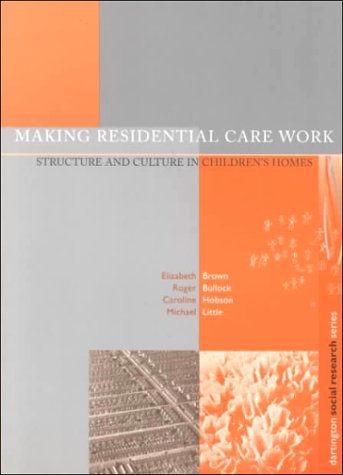Routledge Revivals
5 total works
Making Residential Care Work
by Elizabeth Brown, Roger Bullock, Caroline Hobson, and Michael Little
Prevention and Early Intervention with Children in Need
by Professor Michael Little and Kevin Mount
The first considers different ways of understanding children's needs and their associated social and psychological problems. The second looks at success and failure in responding to children's needs, drawing wherever possible on carefully evaluated programmes and referring to important overviews of research and some policy driven initiatives.
Research in Practice
by Roger Bullock, Daniel Gooch, Michael Little, and Kevin Mount
First published in 1998, this volume focuses on increasingly important aspects of research activity by analysing the various development and dissemination projects undertaken at Dartington during the last 15 years, setting out the evidence for their success or failure and then suggesting a strategy for others who may wish to develop their work by similar means. It introduces researchers to the language of information design, designers to some of the complexities of scientific research and looks forward to a research climate in which new knowledge and new practice spring from the same solid theoretical ground.
Methods of disseminating the findings of social care research have changed radically in recent years, but little is known about the effects of the process on policy and practice. Professionals may have access to more information but do they understand it? Do they use it? Does it affect their practice?
First published in 1998, this Darlington child care study looks at the return experiences of children looked after by local authorities. It shows that although the great majority of children go back to their families and home communities, little is known about the process. How can professionals and carers make the transition as easy as possible? The book takes forward ideas first reported in the Dartmouth publication, going home: The return of children separated from their families and tested in subsequent research. It charts patterns of separation and return, considers the experiences of those involved and highlights factors associated with the likelihood of return and its success. Because the factors described in the earlier research have since been confirmed in a blind prospective study they are among the most robust indicators available.




